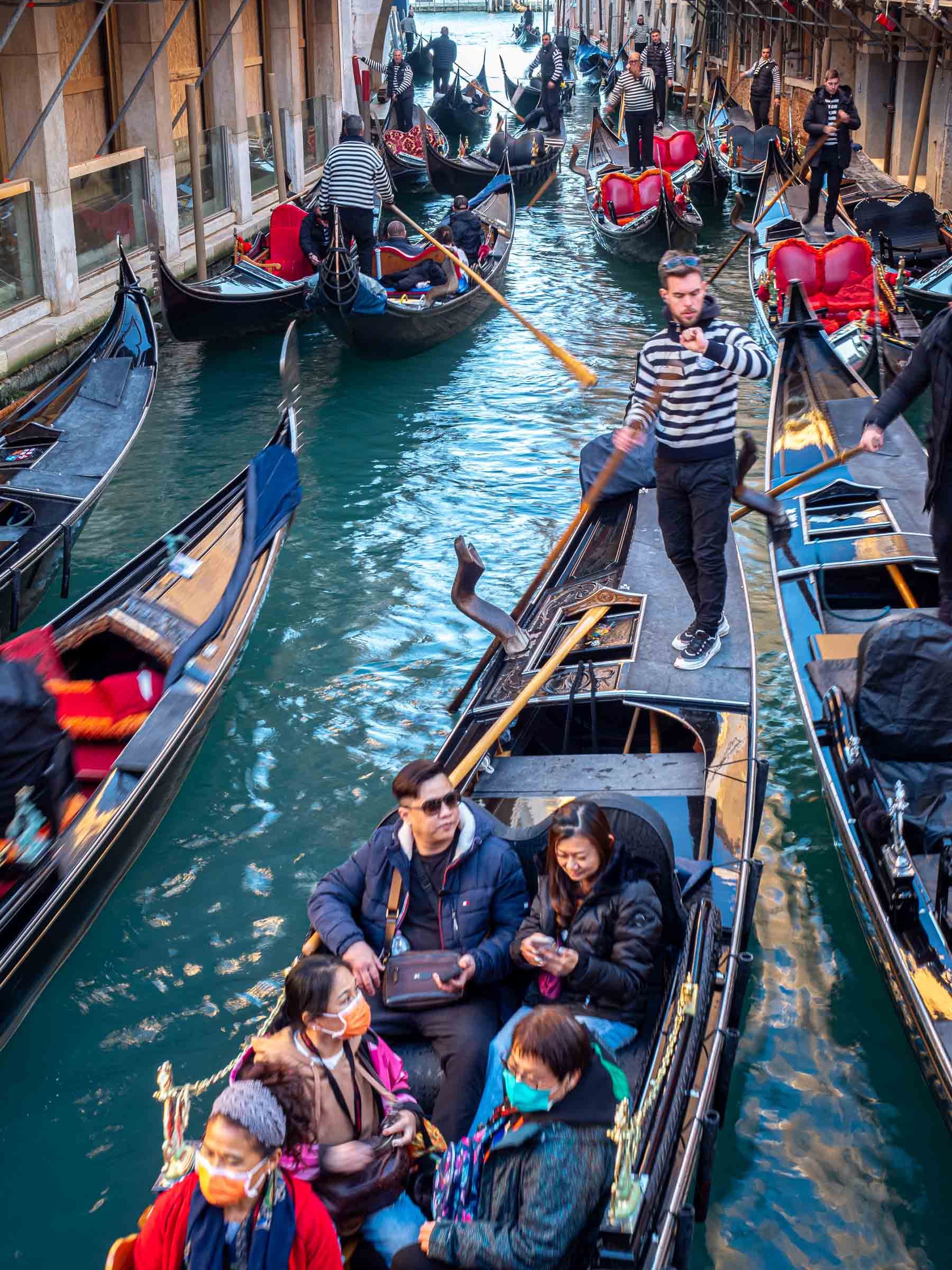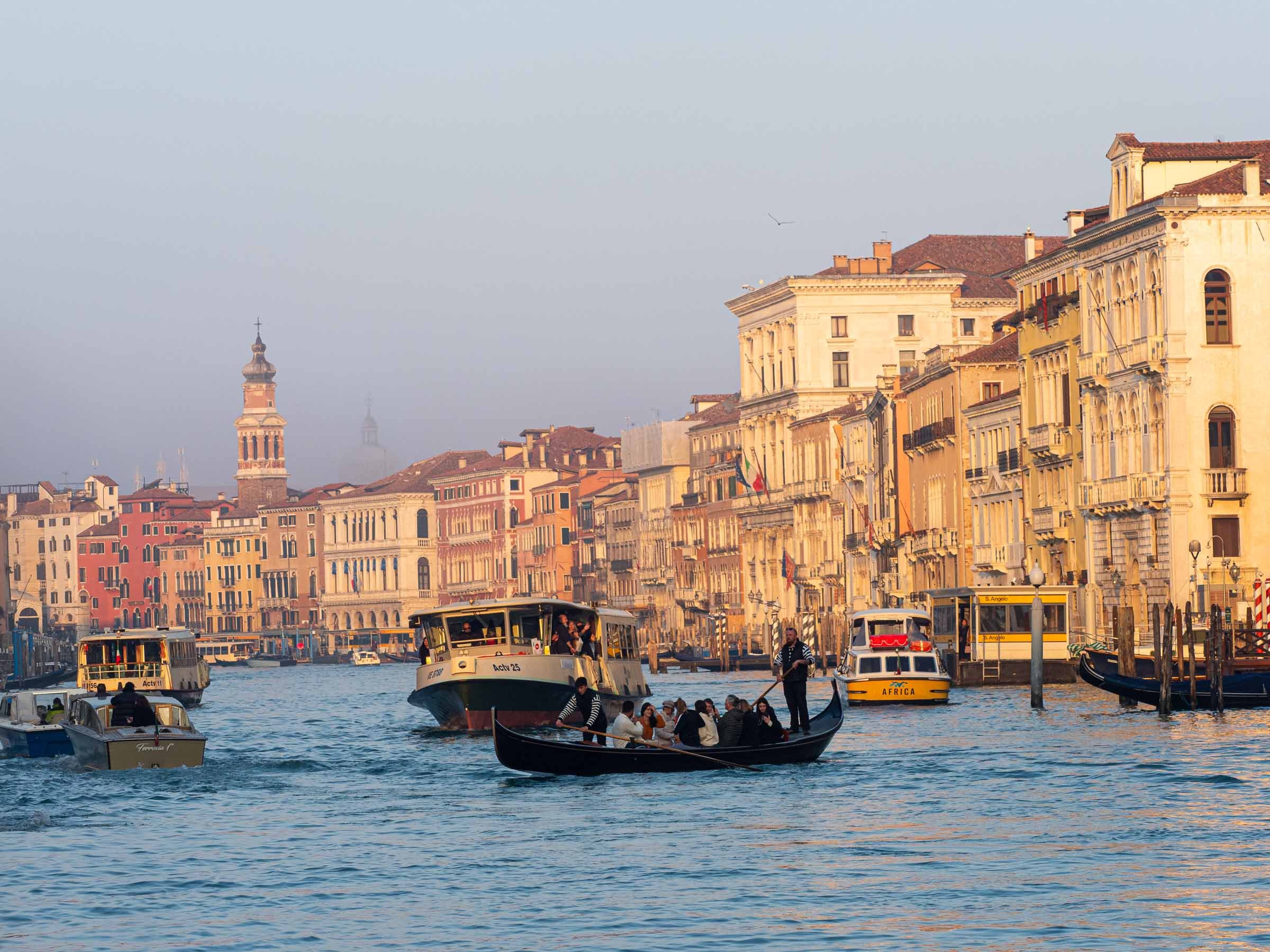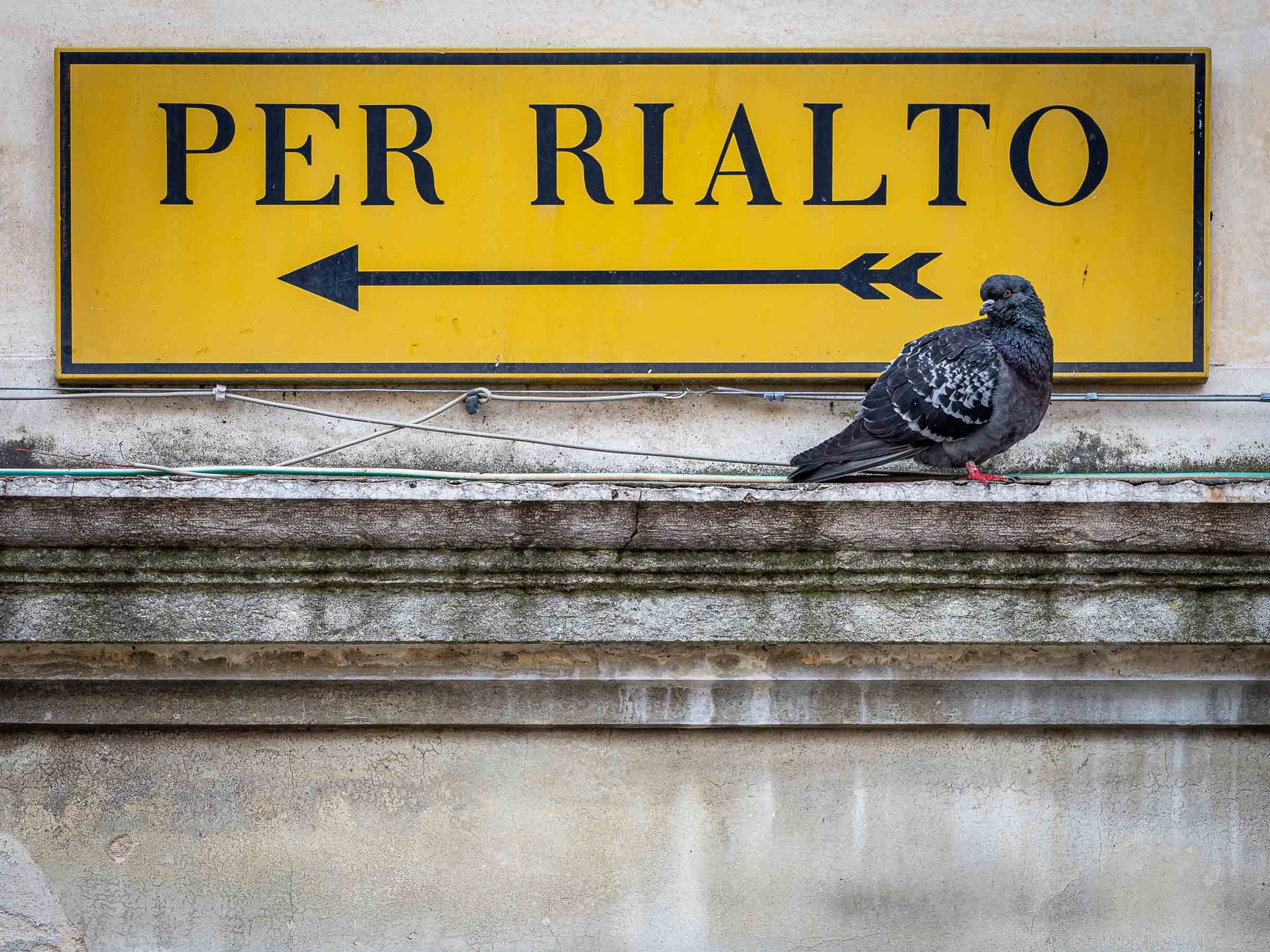The Venetians were a great naval power – perhaps the greatest in the Mediterranean – for hundreds of years. It therefore stands to reason that they were great navigators, a skill which would have (and still does) come in handy for getting around Venice.
Venice, by its nature has a chaotic layout. The main part of Venice is built on 117 small islands, naturally occurring and/or reclaimed and expanded by driving wooden piles deep into the lagoon mud. Connected by 391 bridges, the islands have a network of 3,000 “streets”, few of which run straight. The range from broad avenues like Via Garibaldi to Calle Varisco, the narrowest at only 53cm. They can be a “via”, “strada”, “fondamenta”, “calle”, “calle larga”, “salizada”, “piscina”, “rio tera”, “ramo” or “sotorportego”, plus probably a few others I’ve missed, and many have alternative names. Throw in the “piazzas’, “campi”, “campielli” and “corte”(open spaces and courtyards) and it becomes even more convoluted. Streets may connect to another street, bridge or square or come to a dead end in a courtyard or unexpectedly at a canal with no bridge connection.
Transport of goods is only by water or large trolleys with an ingeniously placed set of jockey wheels to help go up and down steps. Personal transport can also be by water, which unless you own your own boat can be prohibitively expensive. Gondolas at €80-€100 for a half hour sojourn obviously only exist for the exploitation of tourists. Private taxis are sleek and stylish, but likewise expensive. Vaporetti (ferries) are getting ridiculously expensive at €9.50 for a single 75 minute ticket, although daily and weekly tickets can help to moderate the price. If you want to travel in a small(ish) boat without breaking the bank, you can also try one of the seven traghetto services. These look like gondolas, but without all the luxury, and are rowed by two men rather than one. They provide a crossing service for the Grand Canal, which is only crossed by four bridges. A bargain at €2.00, or €0.70 if you’re a local.
Ultimately, the best way to get around Venice is on foot, as long as you have a decent level of fitness and mobility. The confusing nature of the streets can be a problem, but there are ways to get help. You can resort to a good old fashioned paper map, but more and more people are resorting to apps like Google Maps. This is not foolproof though. Google Maps frequently gets street names completely wrong, and GPS signals are easily lost or confused in the narrow streets with four or more stories of medieval stone buildings leaning over you and getting in the way of the satellite signal. If you’re somewhere central you can use the signs on the walls at corners directing you to major points and other useful destinations. These are a charming feature in their own right, with age and weathering adding individuality to the older stencilled signs, although these are gradually being replaced by newer metal ones.
In the end though, if you have nowhere particular you have to be, it’s a great place to throw navigation to the wind and just get lost.


















